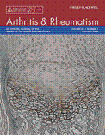Quadriceps strength and the risk of cartilage loss and symptom progression in knee osteoarthritis
Abstract
Objective
To determine the effect of quadriceps strength in individuals with knee osteoarthritis (OA) on loss of cartilage at the tibiofemoral and patellofemoral joints (assessed by magnetic resonance imaging [MRI]) and on knee pain and function.
Methods
We studied 265 subjects (154 men and 111 women, mean ± SD age 67 ± 9 years) who met the American College of Rheumatology criteria for symptomatic knee OA and who were participating in a prospective, 30-month natural history study of knee OA. Quadriceps strength was measured at baseline, isokinetically, during concentric knee extension. MRI of the knee at baseline and at 15 and 30 months was used to assess cartilage loss at the tibiofemoral and patellofemoral joints, with medial and lateral compartments assessed separately. At baseline and at followup visits, knee pain was assessed using a visual analog scale, and physical function was assessed using the Western Ontario and McMaster Universities Osteoarthritis Index.
Results
There was no association between quadriceps strength and cartilage loss at the tibiofemoral joint. Results were similar in malaligned knees. However, greater quadriceps strength was protective against cartilage loss at the lateral compartment of the patellofemoral joint (for highest versus lowest tertile of strength, odds ratio 0.4 [95% confidence interval 0.2, 0.9]). Those with greater quadriceps strength had less knee pain and better physical function over followup (P < 0.001).
Conclusion
Greater quadriceps strength had no influence on cartilage loss at the tibiofemoral joint, including in malaligned knees. We report for the first time that greater quadriceps strength protected against cartilage loss at the lateral compartment of the patellofemoral joint, a finding that requires confirmation. Subjects with greater quadriceps strength also had less knee pain and better physical function over followup.




